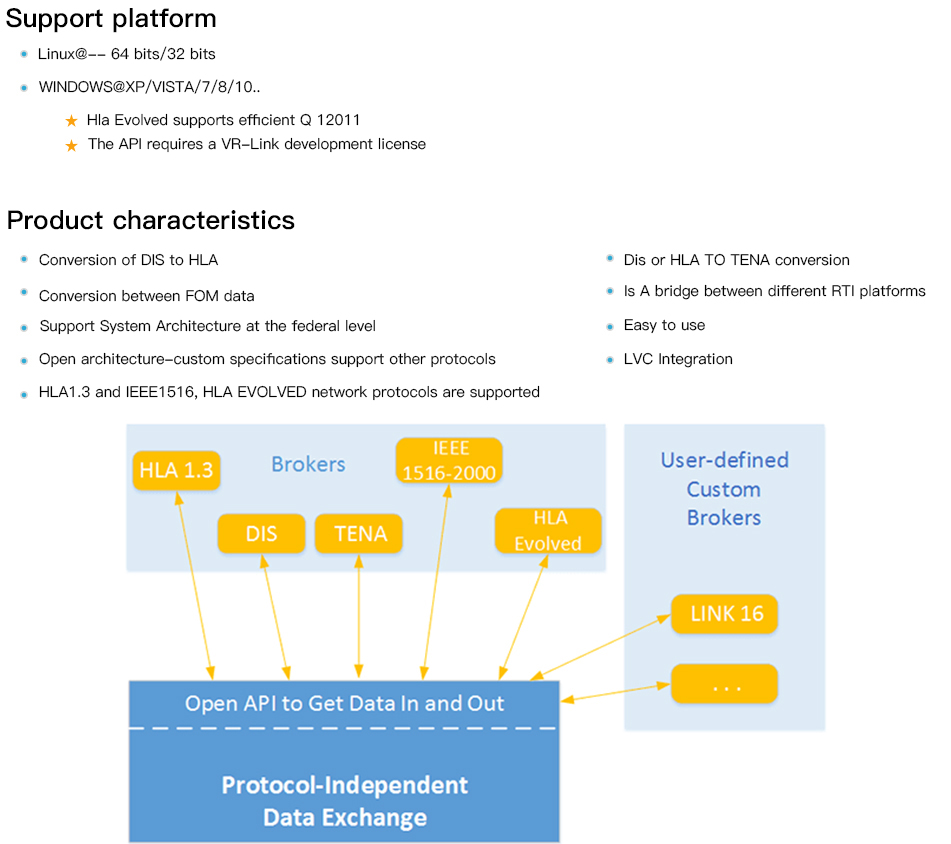Welcome to the official website of SEASTARS CORP.,LTD.
Distributed Simulation Bridge VR-Exchange
Distributed Simulation Bridge VR-Exchange
VR-Exchange is a universal bridge in distributed simulation. Through VR-Exchange users can connect simulation applications that use different simulation HLA RTIs, different object models, and even different simulation protocols.
Product description
The need for bridging
In some cases, because it is impossible for everyone to use the same protocol, the same FOM table, the same RTI platform, and the same TENA LROM, it is very necessary to build a bridge between different applications. In other cases, this kind of bridge is also necessary when a system architect wants to implement a hierarchical "federation in federation" design. In order to support large-scale LVC (live, virtual, build) integration, this kind of bridge is usually needed to support the compatibility and interoperability between simulation and C4I systems. VR-Exchange provides a good solution for all these situations.

Especially easy to use
VR-Exchange allows users to create and configure all aspects of the connection with a simple click of the mouse. Even tasks like configuring which RTI to use can be configured through an intuitive GUI. Not only can it be connected to different LVC components, but it can also be temporarily delayed or disconnected from a federation with a simple click of the mouse. Furthermore, the data display part makes it easy to view the amount of information transmitted and the transmission and communication performance of the network. If a particular object is updated too frequently and brings trouble to the system, the user can simply click the menu to filter the object.

Built-in translator
Currently, VR-Exchange includes agents for DIS, HLA1.3, HLA1516, HLA Evolved and TENA. The agents of HLA and TENA influence the underlying mapping between MÄK's VR-Link®FOM and LROM, which allows users to configure customized physical models. The HLA agent can also be configured for different RTIs by simply pointing out the appropriate shared library.
Scalability
The open architecture of VR-Exchange means that users can develop custom agents for the C4I protocol or other data standards. MÄK provides an API interface document for data exchange, plus some simple code, the code explains how to read and write the data format of the independent protocol. Once the protocol is converted to a form that conforms to international standards, the data can be read by any VR-Exchange agent.

Contact Us
14th Floor, Block A, China International Science & Technology Exhibition Center, 12 Yumin Road, Madian, Chaoyang District, Beijing


